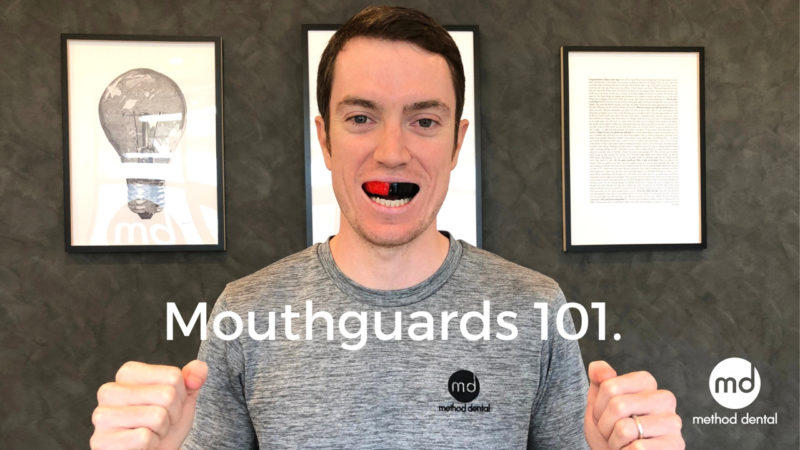Car insurance, home insurance, travel insurance… It sucks how insurance bills just keep coming and coming. You have to pay for them. You know you need them. And when you finally make a claim, you’re glad you had the right insurance. Custom mouthguards are basically the best ever insurance policy you could ever have for your mouth.
How? Well for those who play contact sport, and a lot of Aussie kids do, there is a high risk of getting injured. And injuries to the teeth, gums and mouth? Let me tell you – they are no fun at all.
Dental trauma can result in chipped and broken teeth, lacerated gums, nerves dying and even lost teeth. The shock and pain of those injuries is bad enough, right? Now factor in the stress of needing to get in to see a dentist straight away, often on a Saturday when most dentists are closed.
Add in the cost of treating these complex injuries both immediately and in the long-term. A common example, perhaps $20,000 to immediately treat and later on replace two central incisors that have been significantly injured. Not to mention difficulties in eating and drinking, and even smiling…
Which sports require a mouthguard?
Rugby Union, rugby League, hockey and AFL are all obvious sports where there is a risk injuries to the teeth, mouth, jaws and face and where mouthguards are so important. Many clubs make it compulsory to wear a mouthguard for this reason. But theree are plenty of other sports and activities where you must consider using a mouthguard.
Karate and other martial arts, and even non-contact sports like cricket, basketball, netball, touch football, skateboarding and soccer are other sports where mouthguards may be considered. The reason is that there’s always a chance of accidental knocks, bumps and falls.
So how do you minimise the risk of these injuries? By wearing a mouthguard of course!

But with so many options available on the market, which do you choose? A stock standard preformed mouthguard? A boil-and-bite mouthguard from the chemist? Or a custom mouthguard made professionally by your dentist?
Read on to find out more about the different types of dental injuries, which mouthguard reigns supreme and how to make the most out of and care for your mouthguard.
Common dental injuries while playing sports
Depending on what kind of sport you play, you’re putting your face and mouth on the line every time you step onto the field! These are just some of the common dental injuries you’re at risk of during sporting or leisure activities:
- Cut lips, gums, cheeks and tongue
- Cuts to the face
- Chipped teeth
- Broken teeth
- Knocked out teeth
- Broken jaw
- Concussion
Some people are also at higher risk of injuring their teeth due to the way their teeth are positioned or the sports they choose to pursue. These risk factors include:
- Protrusive (‘buck’) front teeth
- Inadequate lip coverage over the front teeth
- Orthodontic treatment i.e braces
- Participation in activities that carry a high risk of collision or falls i.e skateboarding, BMX
What should a mouthguard do?
A well fitted mouthguard should:
- Prevent cuts and bruising to the lips and cheeks
- Prevent tooth fractures or dislocations by cushioning the teeth from direct front-on blows while redistributing the forces of impact
- Stops the top and bottom teeth from biting down hard on one another upon impact
- Helps to prevent fracture or damage to the lower jaw
- Provide positive reinforcement in the prevention of neck injuries
- Reduce risk of concussion by acting as shock absorbers between the upper and lower jaws
- Make you feel confident in your sport and be ready for a challenge
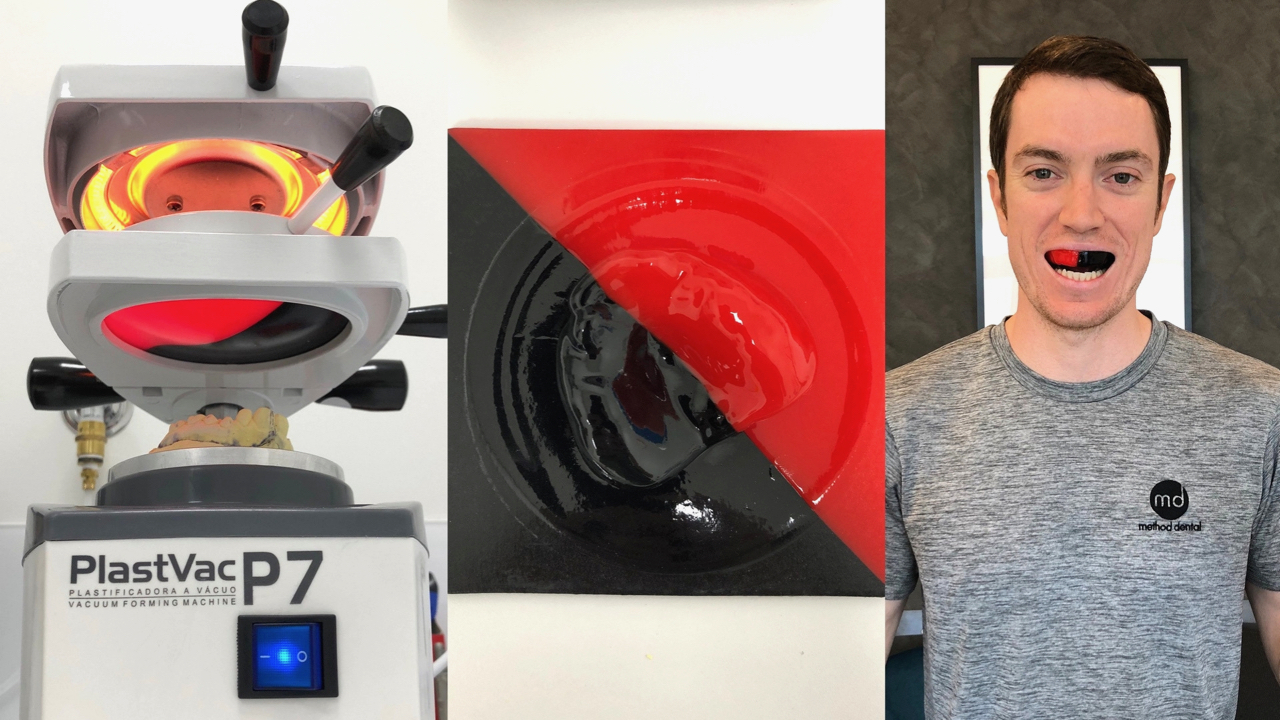
What’s the worst that could happen if I don’t wear a mouthguard?
Did you know that helmets aren’t the only thing that prevent you from concussion? Turns out, mouthguards do too! You see, the most serious and life-threatening consequence of dental injuries is a concussion. That’s not what you would expect right?
During contact sports, blows of varying degrees can be repeatedly delivered to the jaw and chin. The vibrations from these blows are passed to the base of the skull, which contains nerve bundles that affect hearing, balance, and blood supply to the brain. With repeated impact, the brain within the skull can rotate, resulting in a concussion.
What to look for in a mouthguard?
- Comfortable yet tight-fitting
- Allow normal breathing and swallowing
- Allow normal speech
- Doesn’t cause gagging
- Is odourless and tasteless
- Is thick enough to provide protection against impact.
What are my options?
Currently, 3 types of mouthguards exist on the market.
Preformed mouthguards
These are your stock-standard mouthguards you buy off the shelf that are ready-to-wear. While they are the cheapest option, they also offer little or no protection. They’re also uncomfortable to wear, fit poorly, bulky and make breathing and talking difficult. Method Dental does not recommend preformed mouthguards.
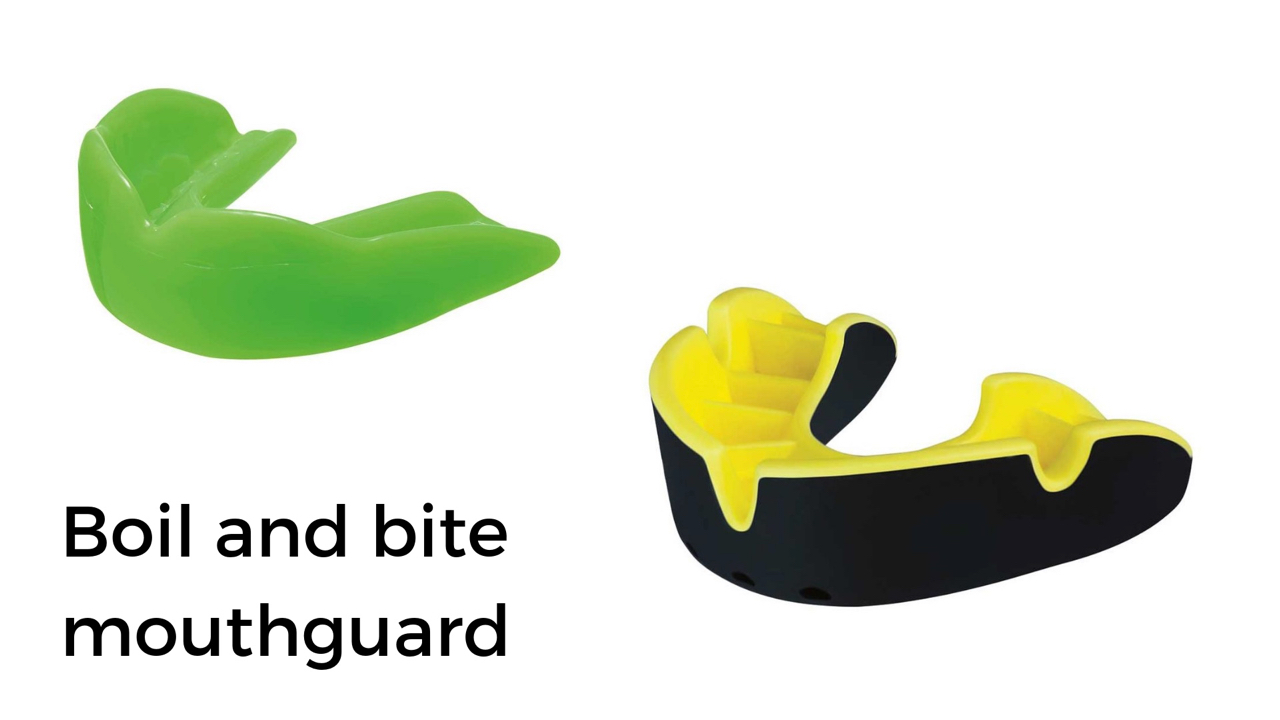
Boil and bite mouthguards
Boil and bite mouthguards are probably the most commonly used mouthguards. They’re self-fitted and can be purchased over-the-counter from a sporting store or pharmacy. You place the thermoplastic material into boiling water, then you bite on to the softened plastic to help it fit your mouth. The mouthguard then takes the shape of your mouth with the use of the lips, tongue, cheeks and biting pressure.
Often, these mouthguards do not conform to your mouth and teeth very well. If the mouthguard doesn’t fit properly, it is less likely to be worn.
Because of their poor and loose fit, they do not protect the teeth, they affect your breathing and speaking, and can get lodged in the back of the throat upon impact, making it a choking hazard.
Ultimately, they’re not of proper thickness and do not provide critical protection to the back teeth which is crucial in reducing the risk of concussion. Method Dental does not recommend boil and bite mouthguards.
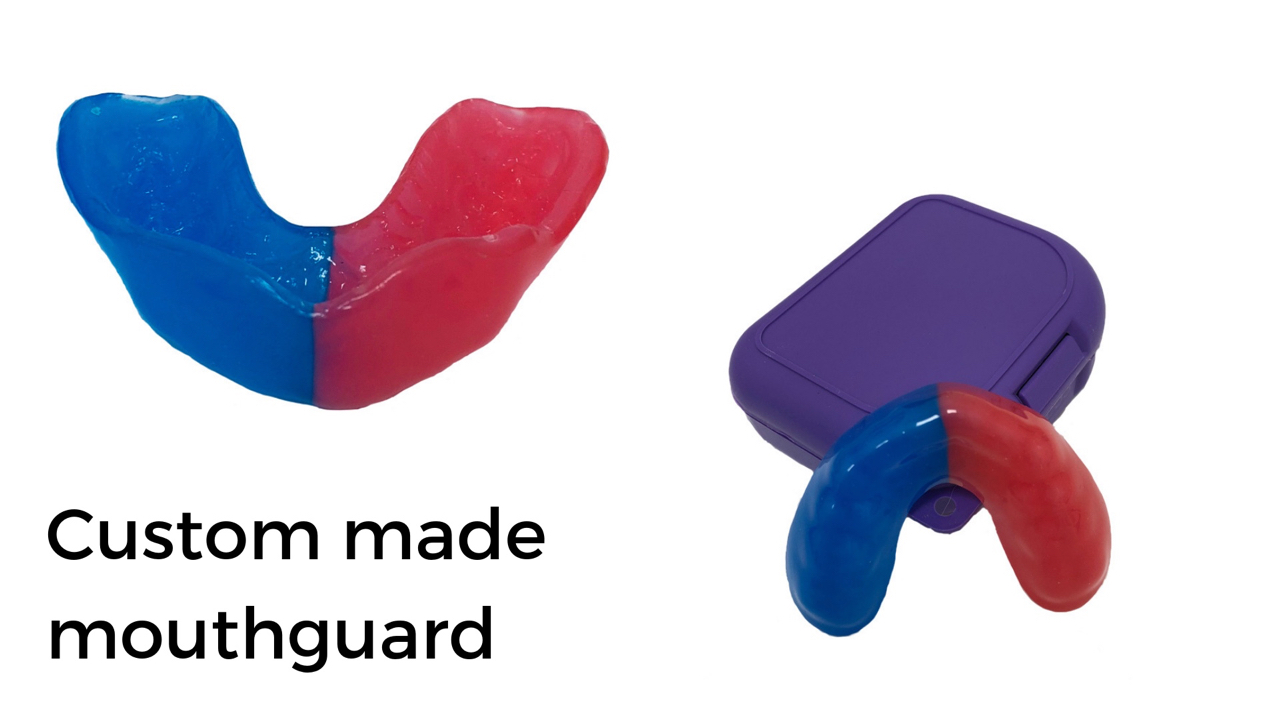
Custom mouthguards
Custom mouthguards are individually made, designed and fitted by your dentist or dental professional. At Method Dental, Dr. Grant will first take an impression of your teeth and then we make a stone cast from that impression. The mouthguard laminate material is softened and vacuumed-formed over the stone model of your teeth so it fits the contours of your teeth and gums like a glove. The material used will vary in thickness depending on the kind of sport you play and you also get to choose the colour of your mouthguard. Bonus!
A custom made mouthguard by your dentist is far superior to any over the counter option. It’s designed specifically to fit the exact contours of your mouth, is resilient, balances your bite, allows for normal speech and breathing and offers the best protection for your mouth. They are able to absorb shock and spread the impact of a damaging blow to prevent injuries to your lips, cheeks, teeth and tongue.
A properly made mouthguard covers and protects all of the teeth, especially the back teeth. It needs to be thick enough to diffuse any impact to the jaw and buffer the transmission of vibration to the base of the brain to prevent a concussion.
While a custom mouthguard is the most expensive option, treating a sport related dental injury cost significantly more which is why a custom made mouthguard is the best investment you could ever make!
To give you an idea, if a tooth was knocked out during a collision, the initial cost of replanting a tooth and follow-up dental treatments can cost thousands of dollars. Over a lifetime, the cost to preserve and care for these damaged teeth can cost anywhere between $15000 and $20000, especially if they eventually have to be replaced!
See what I mean?
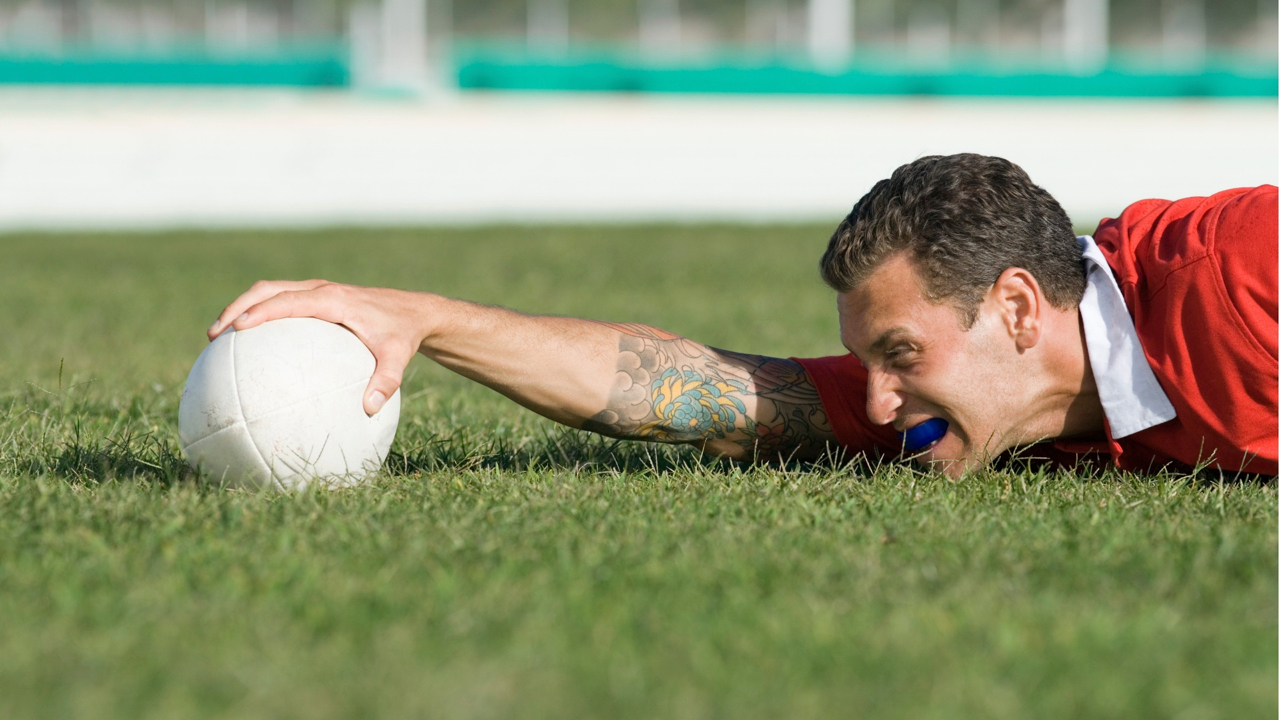
How to get the most from your custom mouthguard
Caring for your custom mouthguard properly means you’re able to use it for its entire lifetime and maximise your return on investment.
These are things you can do to help care for it:
- Rinse the mouthguard in warm soapy water (not hot) after each use. Allow it to air-dry.
- Disinfect the mouthguard from time to time
- Store the mouthguard in a well-ventilated plastic box
- Do not leave the mouthguard in direct sunlight or in the car’s glove box because heat can damage and distort it
- Ask your dentist to inspect your mouthguard at every dental check-up
- Replace the mouthguard if it is damaged or no longer fits
- Replace a child’s mouthguard every 12 to 18 months, even if it is in good condition because growth and new teeth can affect the fit
- An adult mouthguard should last for several years.
Can I wear a mouthguard if I wear braces?
Most definitely. An injury to the face could well and truly damage your braces or other fixed appliances so a custom made mouth guard would be necessary. Your dentist or orthodontist can advise you on what will provide the best protection for your situation. One thing to note, do not wear any retainers or removable appliance during contact sports or recreational activities as it will put your mouth at risk for injury.
A custom made mouthguard is the way to go
And there you have it! Everything you need and should know about mouthguards. From my experience as a dentist, it’s definitely worth spending that little bit more money for a custom made mouthguard to prevent a lifetime of bills and emotional despair. Trust me.
Watch our video: Easy Dental Trauma First Aid: What to do when an adult tooth is knocked out.
Read more about custom mouthguards from the Australian Dental Association here.
Dr. Grant McGrath BDSc
Co-Founder
Method Dental


